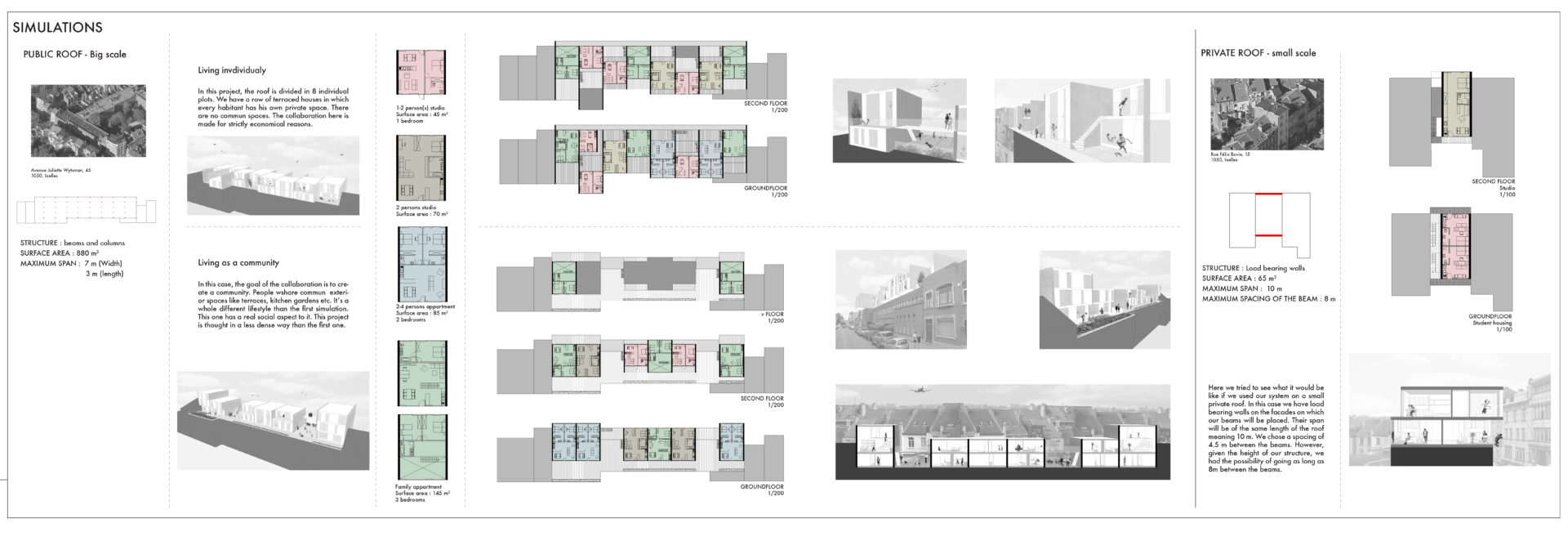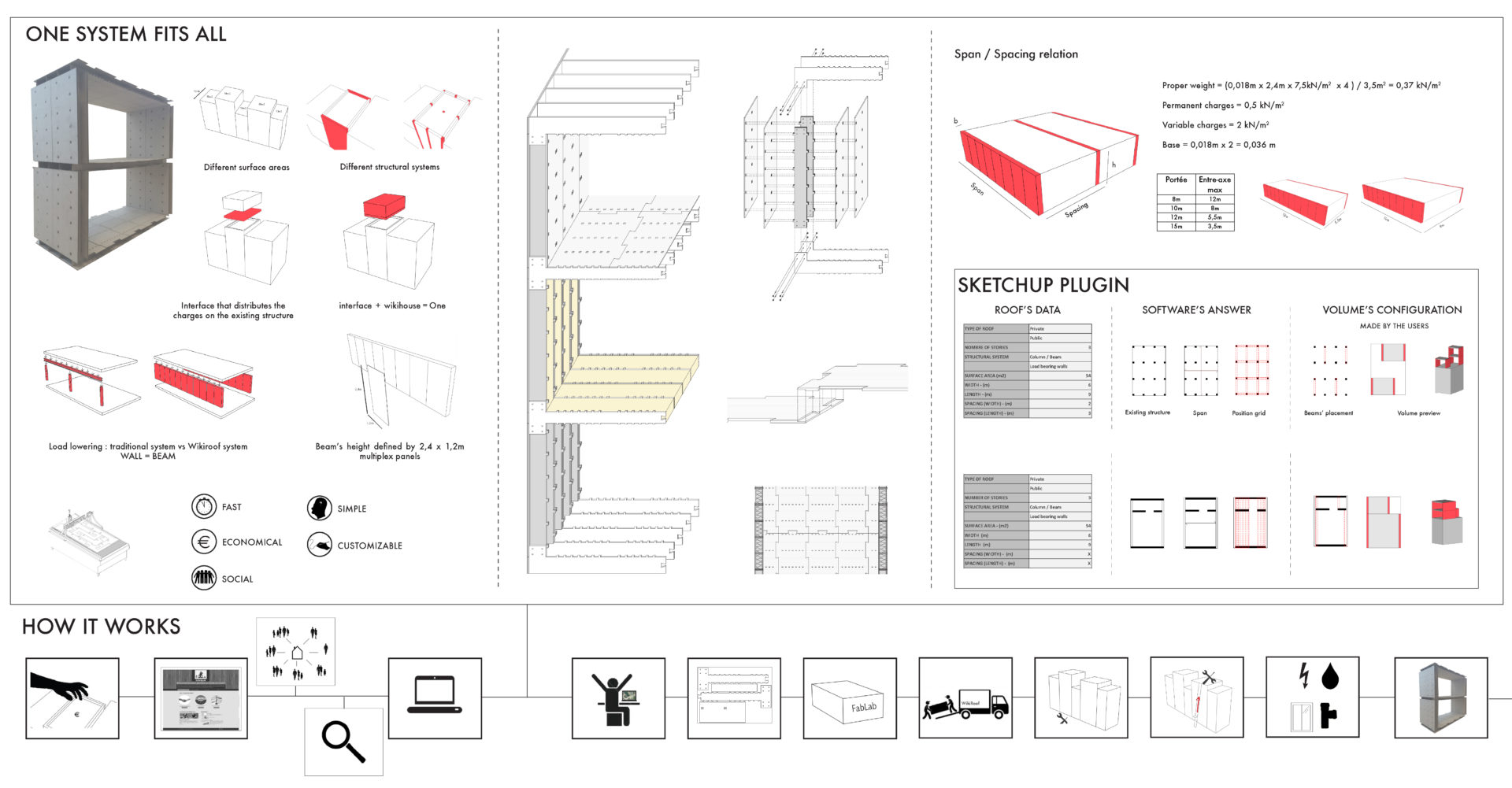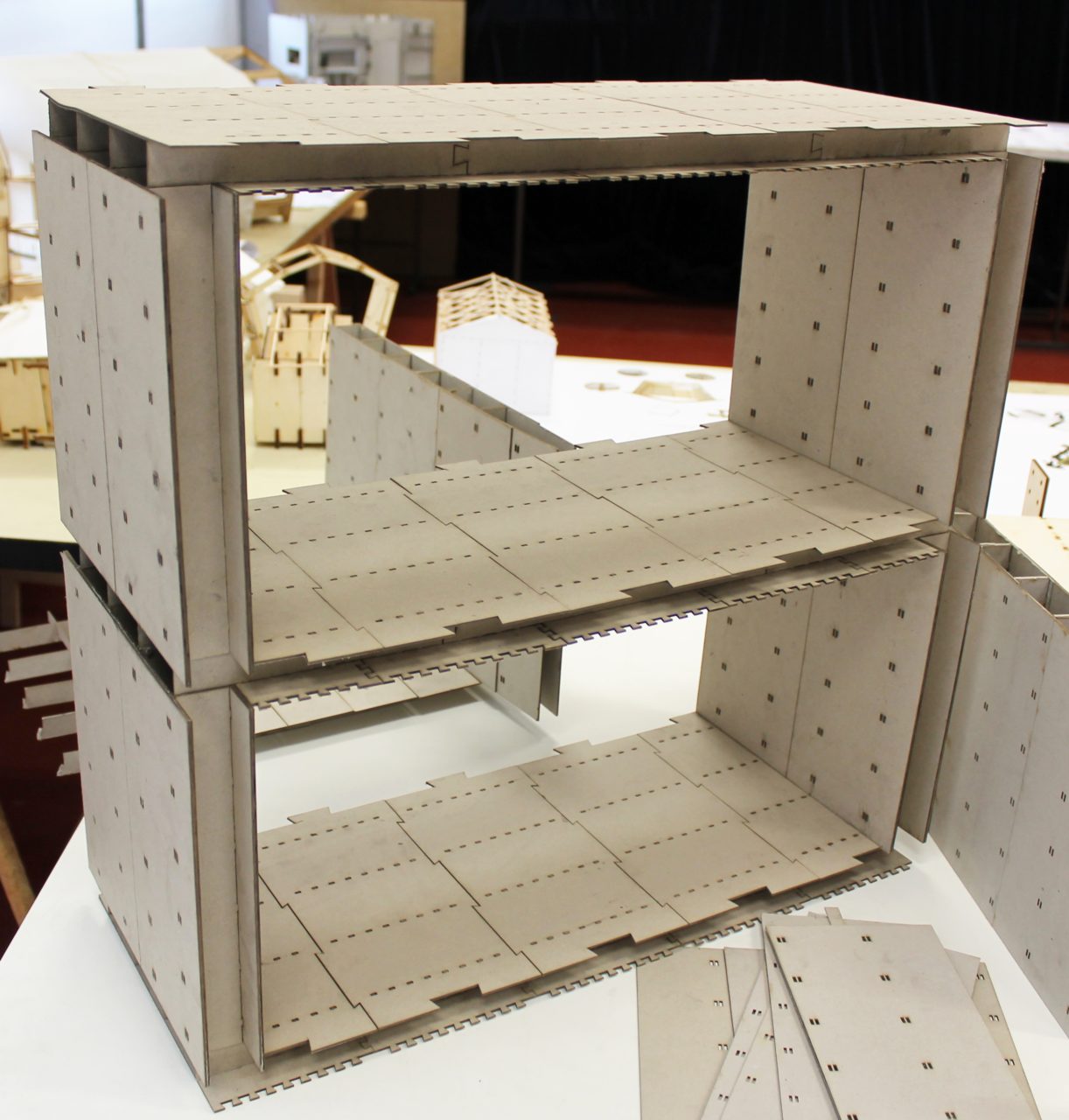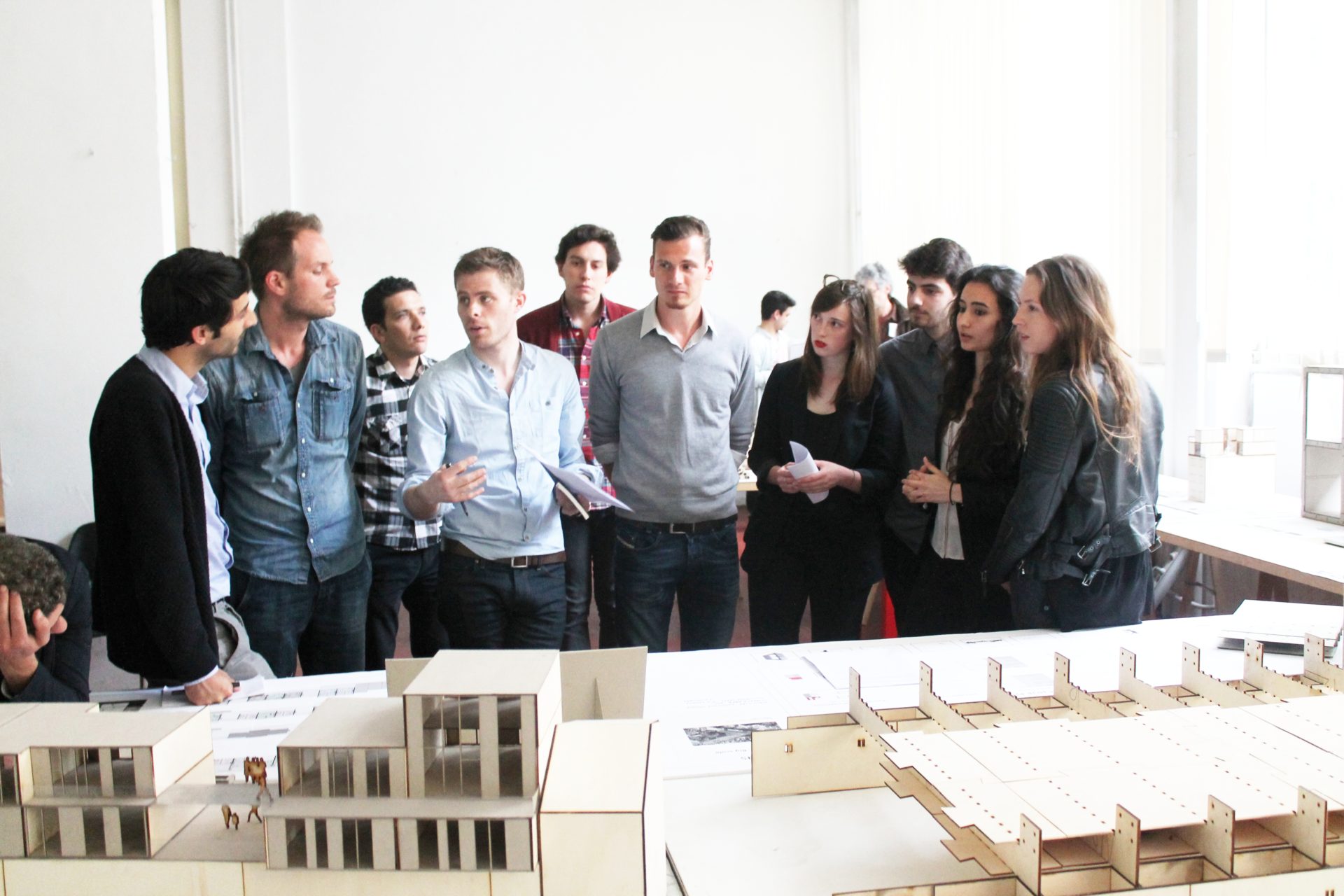Housing | 2014
WikiHouse is a concept of an open source house. It uses the new technologies like CNC-machines and 3D printers to be built. The cutting plans for the CNC-machines can be downloaded for free on the internet. The aim of this is to propose to the people a simple solution to build quickly their own house for as less money as possible. The problem is that the reality is not as beautiful as the concept: the houses still cost as much as a prefabricated wooden house and it is still quite complicated to build alone or even with a small group.
Besides, Brussels, as many other big cities, needs to build a lot of new housing, and fast. The goal here is to help for the densification of the city and improve the WikiHouse system in the same time.
Cities are full of flat roofs, where we could quite easily add one, two or even three floors to density the city. That’s why we choose to adapt our project to flat roofs, and to every of them whatever their size or the structural system they use. For that, we should normally need an interface between the old part and the new one. To make the construction even simpler, we make the interface fusion with the WikiHouse. Every house is then a big beam made of two 2,44m high side walls and a collaborative floor.
The projects which are presented are examples of what can be done with this system. There are two projects on a big roof: one focuses on density of inhabitants and the other focuses on the relation between them. There is also a project on a little roof to show that it is possible on absolutely every flat roof.
-
Living individually
In this project, the roof is divided in eight individual plots. We have a row of terraced houses in which every inhabitant has his own private space. There are no common spaces. The collaboration here is made for strictly economical reasons.
-
Living as a community
In this case, the goal of the collaboration is to create a community. People share common exterior spaces like terraces, kitchen gardens, etc. It’s a whole different lifestyle from the first simulation. This one has a real social aspect to it. This project is thought in a less dense way than the first one.
-
On a small roof
Here, we tried to see what it would be like if we used our system on a small private roof. In this case, we have load bearing walls on the facades on which our beams will be placed. Their span will be of the same length than the roof, meaning 10m. We chose a spacing of 4.5m between the beams. However, given the height of our structure, we had the possibility of going as long as 8m between the beams.
Professors : Denis Delpire, Victor Lévy.
Team : Jean-Baptiste Bernard, Babette Duret, Linda El-Ali, Cylène Streichenberger + Myriam Azar, Fabrice Bladt, Laura Olivieri, Guillaume Vandenberg.





